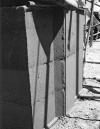Resumen
Este trabajo reflexiona sobre las principales tendencias quesurgieron en la Arquitectura de Tierra en las últimas décadas y losdesafíos actuales en este campo a escala global. Se seleccionaronproyectos y obras de distintos contextos geográficos y culturales,con énfasis en el hábitat latinoamericano, con el fin de identificardistintos modos de proyecto, construcción y producción de edificiosde tierra. Se consideraron distintas posiciones sobre los alcances del material “tierra” y sus manifestaciones en el hábitat social, ysu vinculación con la teoría de la sustentabilidad. Se encuentranavances importantes en el campo de la vivienda, en edificios delequipamiento urbano y en las recomendaciones para construiren zonas sísmicas. También en el proyecto de una arquitecturabioclimática, en las iniciativas para la infraestructura turística y enla innovación tecnológica enfocada en el estudio del material y elcomportamiento de los sistemas constructivos. Como líneas futurasde investigación aparecen la normalización de la construcción contierra con miras a la industrialización de sistemas y procesos; lainnovación tecnológica orientada a mejorar el parque habitacionalexistente en zonas sísmicas; la enseñanza y la capacitación en todoslos niveles educativos; y la generación de modelos alternativosapropiados en la autogestión y la autoproducción de viviendas enel hábitat popular.La revista Apuntes se encuentra registrada bajo la licencia Creative Commons Reconocimiento 4.0 Internacional. Por lo tanto, esta obra se puede reproducir, distribuir y comunicar públicamente en formato digital, siempre que se reconozca el nombre de los autores y a la Pontificia Universidad Javeriana. Se permite citar, adaptar, transformar, autoarchivar, republicar y crear a partir del material, para cualquier finalidad (incluso comercial), siempre que se reconozca adecuadamente la autoría, se proporcione un enlace a la obra original y se indique si se han realizado cambios. La Pontificia Universidad Javeriana no retiene los derechos sobre las obras publicadas y los contenidos son responsabilidad exclusiva de los autores, quienes conservan sus derechos morales, intelectuales, de privacidad y publicidad.
El aval sobre la intervención de la obra (revisión, corrección de estilo, traducción, diagramación) y su posterior divulgación se otorga mediante una licencia de uso y no a través de una cesión de derechos, lo que representa que la revista y la Pontificia Universidad Javeriana se eximen de cualquier responsabilidad que se pueda derivar de una mala práctica ética por parte de los autores. En consecuencia de la protección brindada por la licencia de uso, la revista no se encuentra en la obligación de publicar retractaciones o modificar la información ya publicada, a no ser que la errata surja del proceso de gestión editorial. La publicación de contenidos en esta revista no representa regalías para los contribuyentes.


